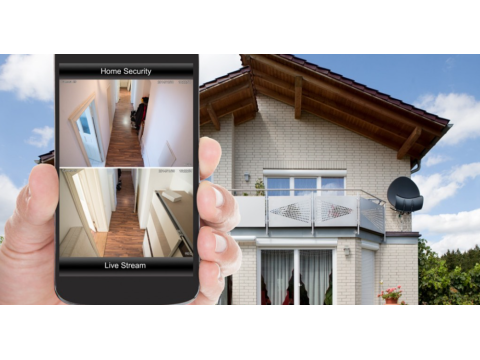How to Set Up Surveillance for Your Country House Using a Mobile Phone
Remote surveillance for country homes is becoming increasingly popular among property owners seeking to enhance security and monitor their premises from anywhere. Using your mobile phone, you can easily check live feeds, receive alerts, and review footage of key events.
Essential Equipment for Phone-Based Surveillance
1. IP Cameras
- Resolution: Choose cameras with at least 2 MP for clear images.
- Weather Resistance: Look for IP66-rated models for outdoor durability.
- Night Vision: Ensure cameras have infrared (IR) capabilities for nighttime monitoring.
2. Internet Connection
- 4G Router: A router with an external antenna is ideal for rural areas, ensuring a stable signal.
- Data Plan: Opt for a plan with sufficient bandwidth to handle video streaming.
3. Power Backup
Install an uninterruptible power supply (UPS) to maintain system functionality during power outages.
4. Storage Solutions
- Local Storage: Use SD cards or a network video recorder (NVR).
- Cloud Storage: Consider cloud services for added security and accessibility.
Installation and Configuration
Key Zones for Monitoring
Identify areas requiring surveillance, such as:
- Entry points (gates, doors)
- Perimeters
- Parking spaces
- Outbuildings
Camera Placement Tips
- Mount cameras at 8-10 feet for protection against tampering.
- Avoid direct sunlight in the lens line to maintain image clarity.
- Ensure overlapping fields of view to eliminate blind spots.
Connecting to the Internet
Recommended Setup
- Use a 4G router with an external antenna for better signal stability.
- Assign static local IPs to each camera for easier configuration.
- Enable a firewall to prevent unauthorized access while allowing essential ports.
Mobile App Integration
Most modern IP cameras come with companion mobile apps for remote access.
Steps to Set Up:
- Download the app (available for iOS and Android).
- Create an account and scan your camera’s QR code.
- Set strong passwords and enable two-factor authentication.
Key Features to Utilize:
- Motion detection alerts
- Live streaming
- Event recording notifications
Data Storage Options
Local Storage
- Advantages: Cost-effective and easy to set up.
- Limitations: Vulnerable to theft or damage.
Network Video Recorders (NVRs)
- Advantages: Centralized storage with large capacities.
- Limitations: Higher initial cost.
Cloud Storage
- Advantages: Remote access and protection against data loss.
- Limitations: Monthly fees and reliance on internet connectivity.
Ensuring Security and Reliability
Cybersecurity
- Regularly update firmware for cameras and routers.
- Use strong passwords and two-factor authentication.
- Encrypt data during transmission and storage.
Physical Security
- Conceal cables in protective casings.
- Place cameras in locations difficult to tamper with.
Maintenance
- Clean camera lenses regularly.
- Inspect cables and mounts for wear.
- Test backup power systems.
Advanced Features and Expansion
Smart Integration
Modern surveillance systems can integrate with smart home devices for added functionality, such as:
- Automated lighting control
- Security alarms
- Fire and smoke detection
Scalable Systems
Choose NVRs and internet plans that allow for the addition of new cameras and increased storage as your needs grow.
Conclusion
- Mobile phone-based surveillance systems offer a cost-effective and user-friendly solution for securing country homes.
- Proper planning and installation ensure reliable operation and robust security.
- Modern technologies make these systems accessible while providing advanced features typically found in professional setups.
- With regular maintenance and security measures, you can enjoy peace of mind knowing your property is well-protected.

